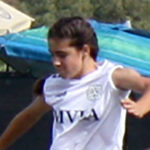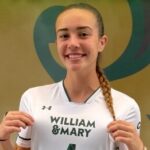Coach as First Responder: The Trouble with Niggles
By Dr. Wendy Lebolt
As coaches we are not meant to be sports medicine experts and we shouldn’t overstep our credentials. But, let’s face it; we’re our athletes’ first responders. When they go down on the field, the referee signals for us to come on and check out their condition. This is a unique privilege – just ask any parent who has been prevented from coming on to attend to their injured warrior. As parents, we’re inclined to rescue. As coaches, we have to weigh our options.
As we run onto the field, the play we just saw is running through our minds. What happened? How did they get hurt? Did she get clipped from behind? Did he turn his ankle? Did her knee buckle? Was there a collision of heads? Of course, we are also picturing the particulars about this kid, thumbing through our mental file cabinet sorted by nickname and jersey number. Are they quick to tears? Do they shake stuff off easily? Will they insist on staying in the game no matter what?
When we reach them, we survey the scene. How they are lying, what they are bending or holding onto or rubbing. Or, heaven forbid, if they are not moving. Then we have to decide what to do next. This is my approach to triage.
If they are not moving and/or if you suspect any sort of neck or back injury, call the ambulance. (Call on medical professionals immediately)
If there has been a collision but they can sit up, discontinue their play. If you suspect a concussion assist them to the sidelines and ask questions to gauge their clarity. Ask about the game, the score, the name of their team, their opponent, what they did last night, etc. Pay attention not only to their answers but to the way they respond. (more on concussions in these posts)
For injuries other than concussion, check for visible signs. Ask: what hurts? Where? If they are vague (ie. “around my knee” or “my ankle”) ask them to point to what hurts if they can. Put their finger on the place or area that hurts. Have them rate the pain on a 1-10 scale. If there is extreme pain (5-10) or swelling or they can’t move at a joint, they are done with play until they have seen a doctor and have clearance to play.
If they rate their pain 1-4, move on with your evaluation. Here comes the “coaching” part. I have them:
Stand. If they are balanced and show no impairment, I have them
walk. If they can walk normally without favoring the injured part, I ask them to jog. Watch them carefully, especially the ‘tough-it-out’ ones. They may try to soldier through pain to get back on the field. Finally, ask them to execute moves they would have to perform on the field. Try to get them to reproduce game pace and intensity as much as possible. Can they hop, cut, and jump without breaking form? If they can, they may choose to return to play.
If their movement is compromised, they should be discouraged from play. I would sit them and promote them to assistant coach. Not just keeping stats but analyzing the game, the opponent’s weaknesses, the places for attacking opportunities. They have just come off the field after all. They will offer a viewpoint you can’t possibly have. They may see something you’ve missed. This is how you can take them out and still keep them in the game.
The news is ripe with so-called “heroic” stories of athletes who have played through injury. For instance, Tiger Woods competing with a leg break and a torn ACL and 1996 Olympic gymnast Kerri Strugg landing a vault on a severely sprained ankle. These really should not be our role models and certainly not our standards. For the kids who have been entrusted to our care and tutelage we need to take the long view. Any compromise in movement means weakness and perhaps subconscious “favoring” by the rest of the body. This significantly increases their risk of injury. Young athletes, though they may beg to get back in there, are not able to see things this way. After all, without a mirror they can’t see themselves move. You have to be this mirror for them.
Of course, injuries, while more common during competition, happen during training as well. Early in the season, especially, they take knocks and feel “niggles” (My English friends taught me this word for a localized but relatively minor discomfort). Use the niggle as a way to help your athletes get to know their bodies better. Help them learn to monitor what is something to “shake off” and what needs rest.
Most of your players, unless they are in very good physical shape, will have some initial soreness, especially in the most used muscles. As long as this diminishes with warm up it should generally be safe to play on. Pain that persists or enhances during or after training requires rest. If there is no relief or improvement or the pain returns when they return to training, call on a medical professional for evaluation.
Be sure to encourage open communication with your players about how their bodies feel. Don’t penalize kids for being honest. A minor injury, left untended, can become a major problem and a life-long ailment. I am certain many of you reading this know exactly what this feels like. To protect against this we need to:
- Catch minor injuries early
- Plan rest and recovery into training and competition
- When injury happens, triage it appropriately. Keep the long view.
- Seek medical advice if there is concern
- Have a protocol for safe return to play
- Help them compete to win their spot back on the field
All this starts with a coach who teaches players to pay attention to how their bodies move and feel. Athletes are naturals at this, especially when they learn it young. Kids may think they’re indestructible. We know the truth about the human body: we only get one.
—
[Editor’s note: This is the latest column from Dr. Wendy Lebolt, a longtime coach and physiologist who is the founder of Fit2Finish, a Northern Virginia-based training, fitness and rehabilitation company which works with teams and individual players to maximize health and performance. The Soccer Wire is excited to present Wendy’s learned perspectives on the mental, physical and psychological aspects of the beautiful game. Learn more about her background here.]
SOCCERWIRE MARKETPLACE
- Wanted Licensed Youth Soccer Coach
- Join Official Elite Summer Soccer Camps with Europe’s Top Pro Clubs!
- The St. James FC Travel Staff Coach - North (Loudoun) & South (Fairfax)
- The St. James FC Girls Academy (GA) Head Coach - 2 teams
- The St James FC Boys Travel Tryouts
- OFFICIAL BAYERN MUNICH SUMMER CAMPS U.S.
- JOIN THE ALLIANCE!
- OFFICIAL FC BARCELONA CAMPS U.S.
- The Cup San Diego - Hosted by Legends FC
- Players Wanted - Undergraduate or Post-graduate











